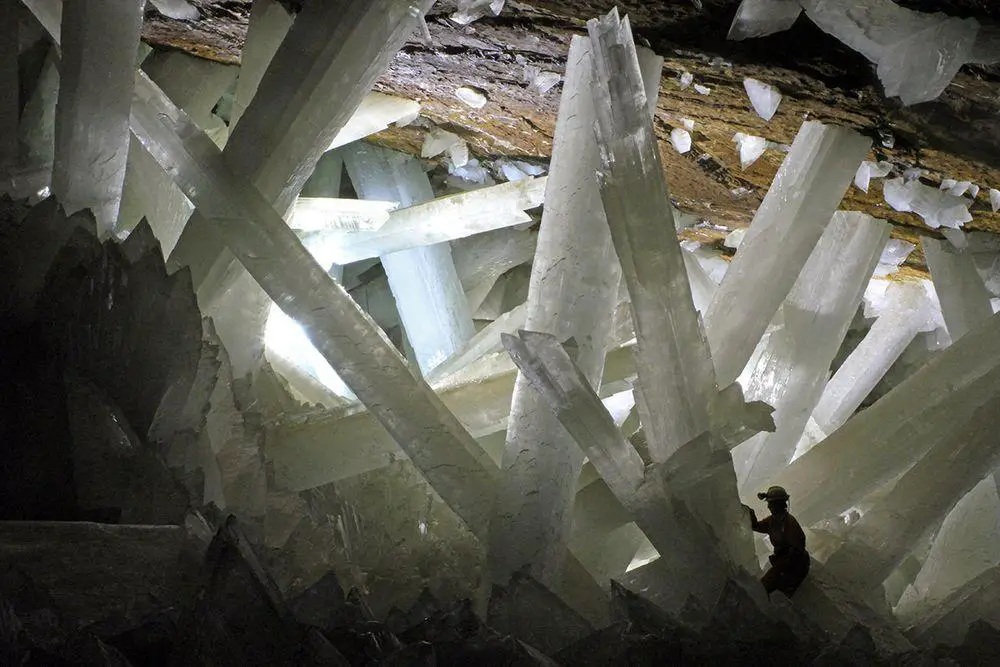World 🢖 Europe 🢖 Germany 🢖 Bavaria
Spring tufa, travertine and other formations 🢔 Springs 🢔 Geological wonders 🢔 Categories of wonders
Wonder
Usterling Growing Rock (Johannisfelsen)
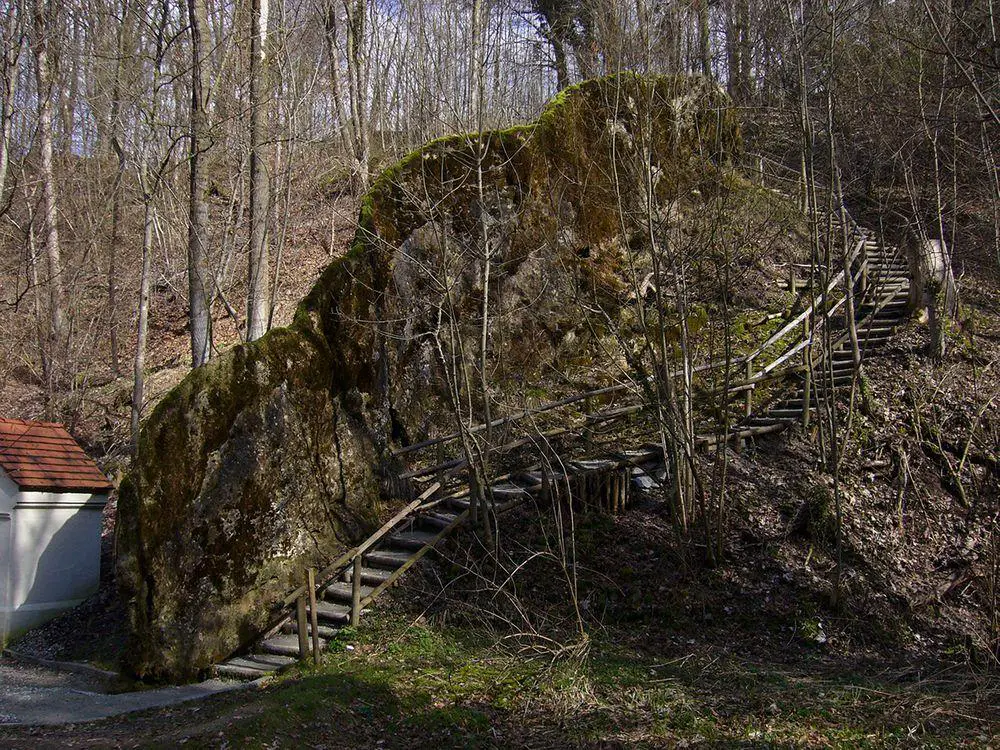
 In short
In short
Sometimes humans can help the nature in creation of its wonders and Usterling Growing Rock in Bavaria is one of such cases. Thanks to centuries long effort nature and humans developed a highly unusual formation – natural, up to 5.4 m tall stone wall. Fresh spring water flows along its upper rim.
 45.8%
45.8%
GPS coordinates
Location, address
Map of the site
If you see this after your page is loaded completely, leafletJS files are missing.
 In detail
In detail
Tufa runnels or fissure ridges
Some of the rarest travertine formations are fissure ridges or (unofficially) tufa runnels. Tufa runnels defy our understanding about streams: we have used that streams flow where it is lower. In a case of active fissure ridges, we see the opposite: there is a ridge or even a wall and… on the top of this ridge (or wall) flows a lucid stream of clean water!
Tufa runnels have formed by the activity of lime-rich springs. Often these travertine formations grow along existing fissures that emit spring water. As the lime deposits on the bed of the stream, it rises higher and higher. But, as the travertine covers both sides of the stream (helped by moss), it can not "escape" and continues to rise up together with the wall. The tallest fissure ridges grow more than 15 meters tall and might be more than 500 m long.
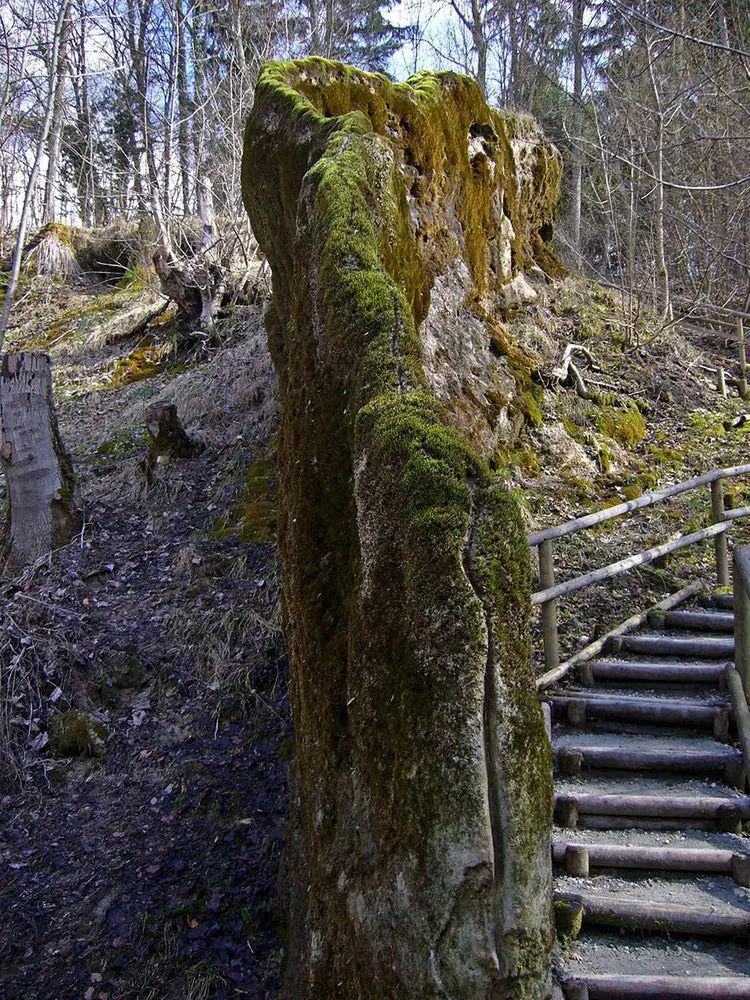
In most cases tufa runnels are just elongated ridges of travertine with a narrow channel on the top. Sooner or later the stream by some natural occasion diverts away – then travertine becomes dry and overgrown with grass and bushes. Finally, it degrades beyond recognition.
In very rare cases though nature creates a true natural wall of travertine with a stream on the top of this wall.
Growing rock – wonder of Usterling
One of the most impressive tufa runnels – may be the most impressive of them all is located in the cozy countryside of Bavaria, near the beautiful historical town of Landau an der Isar.
Here, on a forested slope stands a weird wall. Springs have formed it over several millennia and now the wall is 37 m long and up to 5.4 m tall. Its summit is some 40 – 50 cm wide. A most impressive characteristic of this wall is that it is… a wall. Its base is only a little thicker than the summit. The geological process continues – along the upper rim of the wall runs a stream and every year the wall grows per some centimeters. The stream is slightly meandering – also the wall repeats these small meanders. At the end the stream forms a small waterfall and falls down, turning into a common brook.
Vegetation has covered the travertine wall – most of it is moss (e.g. Cratoneuron commutatum) and algae. It plays an important role in the development of the wall – dead parts of plants and algae are quickly covered with lime – thus vegetation facilitates faster growth of the wall.
This is not the only tufa runnel in Bavaria – there are at least 16 other ones but none of the other ones has formed such outstanding wall as tufa runnel in Usterling.
Human assistance in the name of John the Baptist
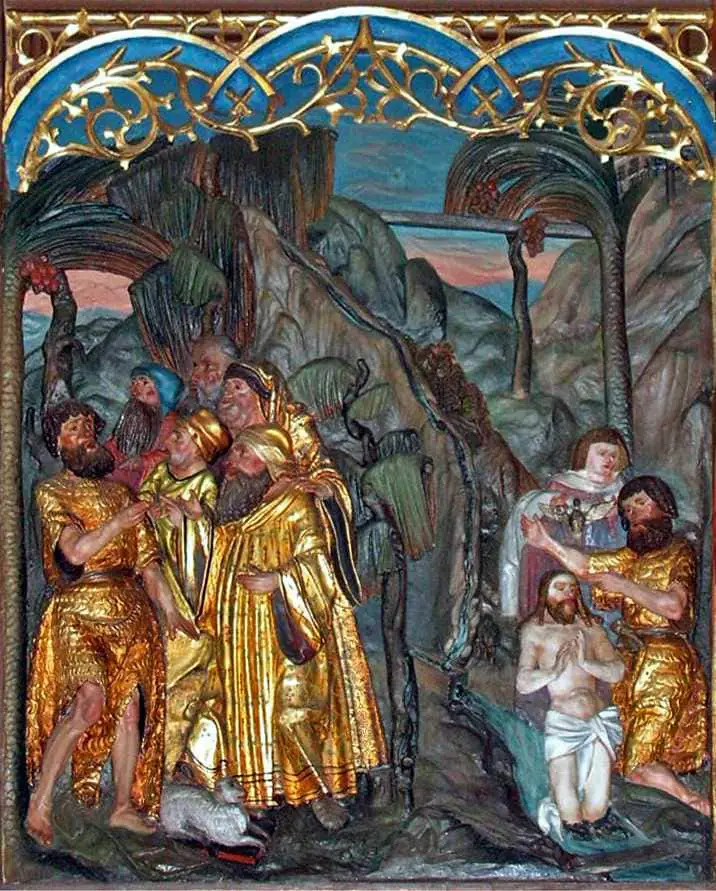
People noticed this unusual natural formation long ago. Very interesting, painted Late Gothic relief is located in the local Usterling church – it shows that Jesus is baptized by John the Baptist right at this peculiar cliff! This relief is from 1520 and shows the Growing Rock as it looked back then. Thanks to this locals call the cliff Johannisfelsen.
Unusual natural landmarks often served as cult sites for Pre-Christian religions. It is possible that the Growing Rock also had such importance – up to these days, some believe that the water of this spring can heal eyes. Thanks to this belief in earlier times this was a well-known pilgrimage site. Now people come here on St.John’s Day, 24th June. One can speculate that the church has taken over some Pre-Christian midsummer festivities and replaced them with the cult of John the Baptist.
At the wall stands a small chapel – St.Johannes-Kapelle. Local clergy has taken care of the cliff for centuries – it has been cleaned of grass, soil, and shrubs. During the winter the water was channeled away to avoid damage by the ice. We can be sure that this amazing landmark now exists only thanks to this care.
Growing Wall is a natural monument since 1937 and currently, nature conservation authorities have taken over the care of it.
References
- Wachsender Felsen von Usterling – shield at the site. File accessed on May 1, 2017
Usterling Growing Rock is included in the following article:
 Linked articles
Linked articles
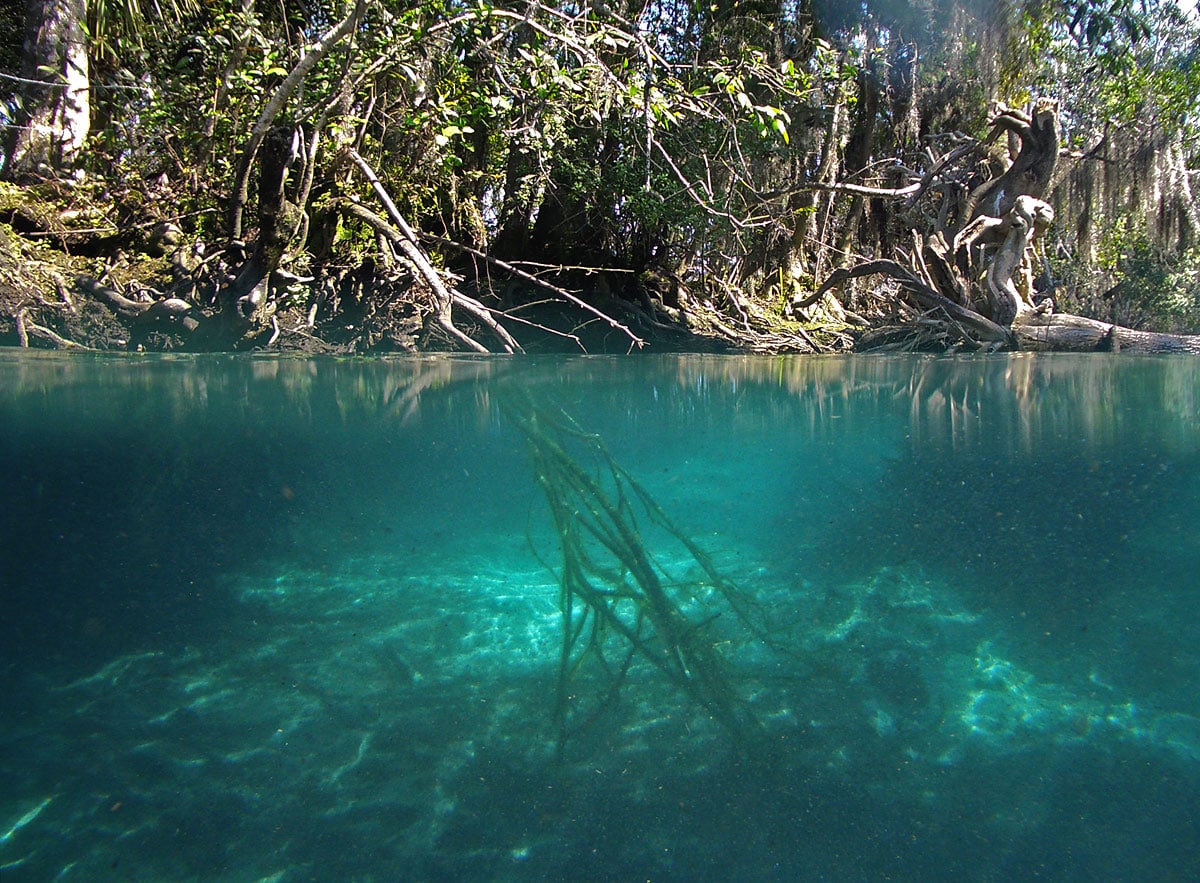
Springs
Powerful natural freshwater springs belong to the most fascinating monuments of nature. Even more exciting is the diversity of unusual springs – mineral springs, hot springs, submarine springs as well as the unusual black smokers. Especially beautiful are such natural rarities as travertine, silica, or salt terraces created by warm and hot springs and, especially, geysers.
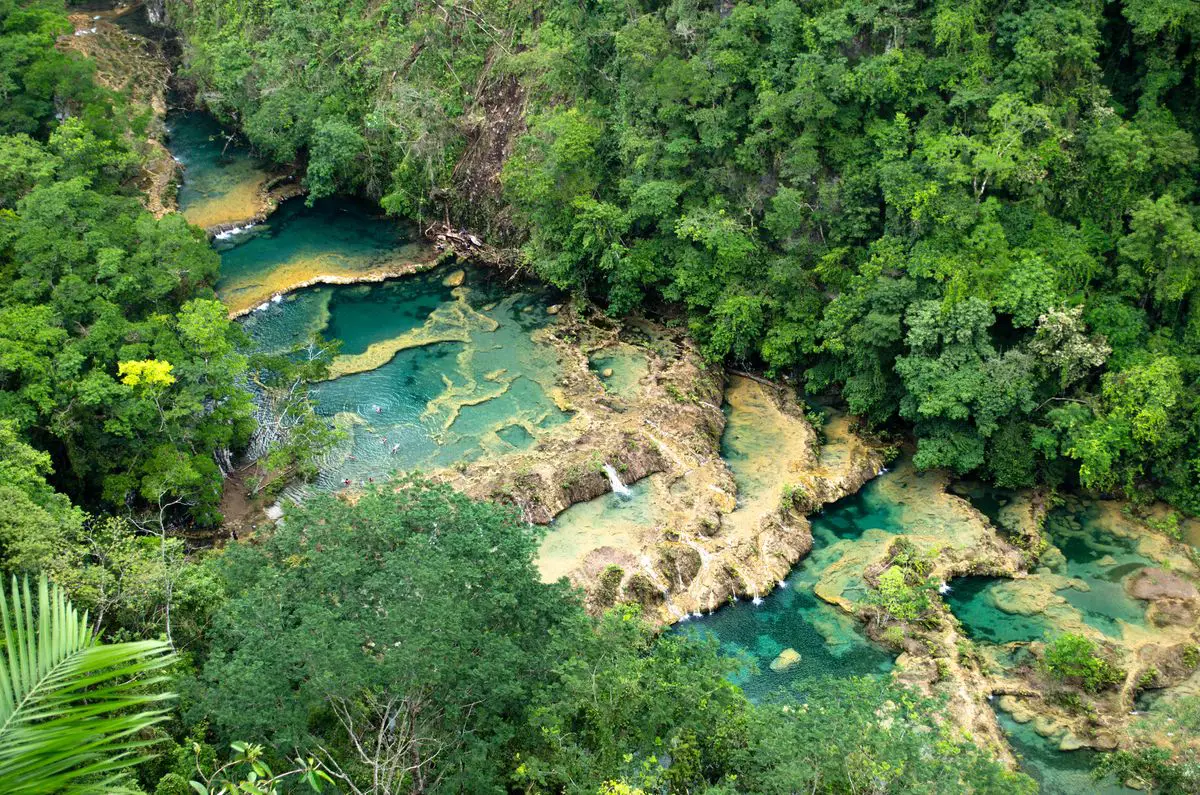
Spring tufa, travertine, and other formations
This category includes very diverse landmarks that have one thing in common: all of them are created by springs that are depositing chemical sediments – silica, carbonates, salt, or other chemical compounds.
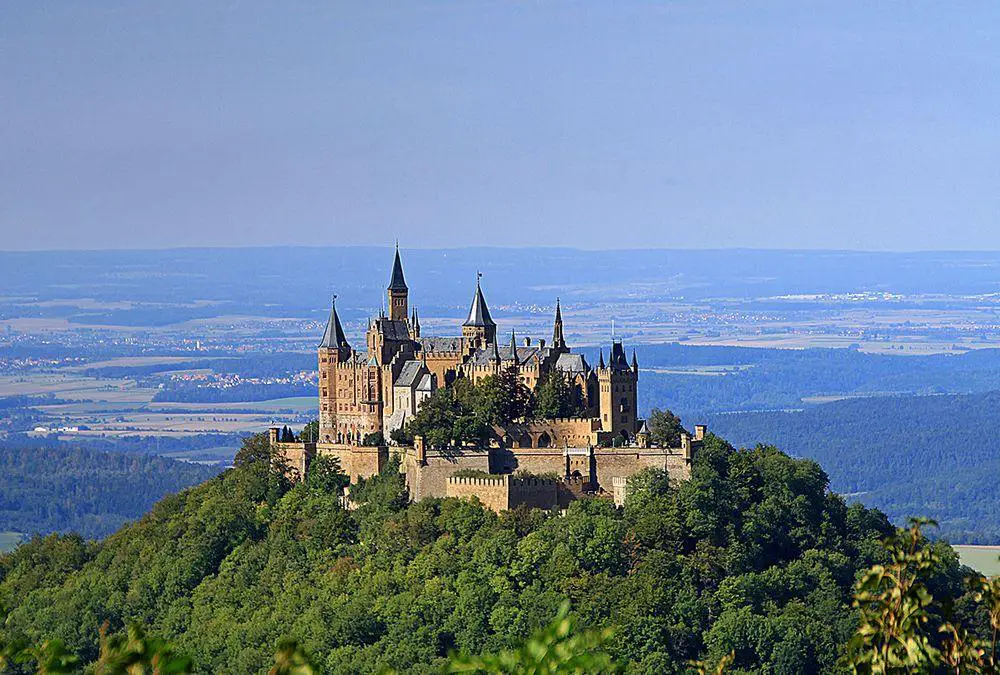
Wonders of Germany
Germany has a picturesque landscape and rather many natural landmarks, but these are overshadowed by the rich and diverse cultural heritage. From time to time immense values have been lost in warfare, but Germans have duly rebuilt their cultural treasures and are constantly creating new values.
 Recommended books
Recommended books
Travertine
Travertine is an excellent contribution, condensing the large literature base on travertine into one book. The book’s strength is the thorough, well-organized, and interdisciplinary survey of travertine, reflecting the author’s extensive experience with the topic. Each chapter in this book provides an excellent starting point and literature review to launch more detailed inquiries about travertine and travertine depositing systems.
Rock Formations and Unusual Geologic Structures
Looks at the earth’s crust, sedimentary strata, erosion, geologic mapping, fossil beds, folds and faults, volcanoes, and glaciers.

